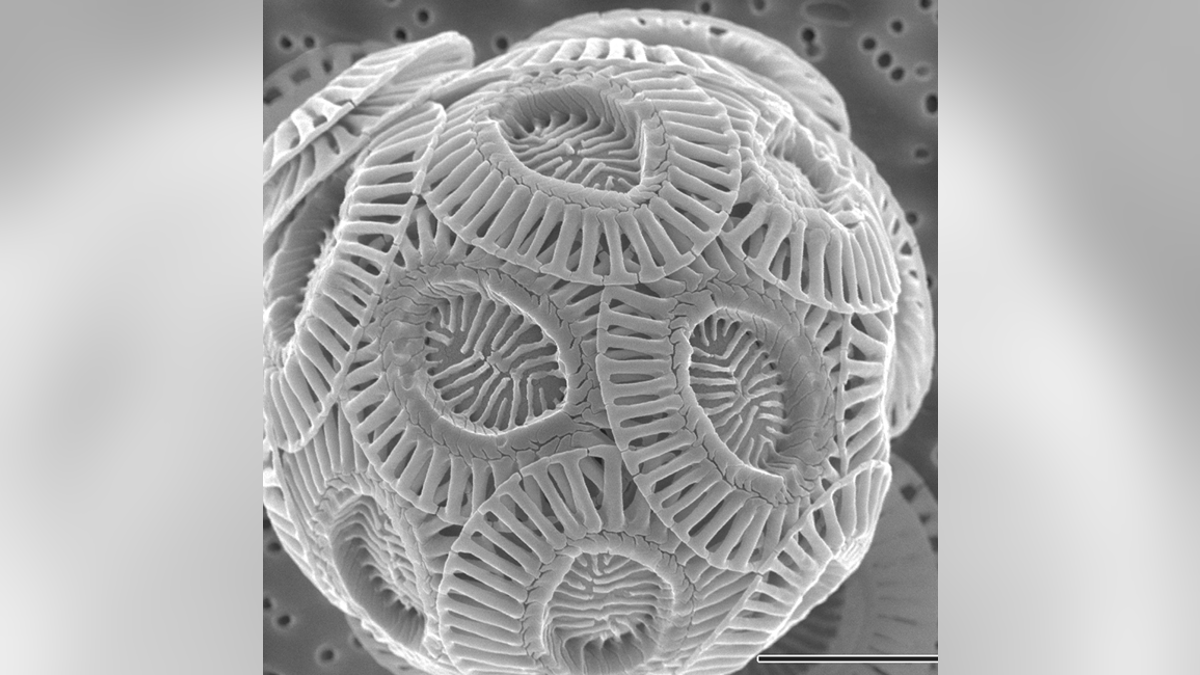
Coccolithophores are tiny algae that form calcium carbonate shells. (<a href="http://www.plosbiology.org/article/browseIssue.action?issue=info%3Adoi%2F10.1371%2Fissue.pbio.v09.i06 ">PLoS Biology, June 2011</a>)
The White Cliffs of Dover, the steep, chalky cliffs that fringe England's southeastern coastline, formed about 100 million years ago thanks to a "Goldilocks" set of ocean conditions, new research suggests.
What's more, a massive new set of cliffs could be forming right now in the Southern Ocean near Antarctica as tiny algae shed their calcium-laden shells. However, depositing enough of that mineral, called calcite, to form similar cliffs could take millions of years.
"While we don't have the great cliffs of the Southern Ocean, there is solid evidence that the calcite is making it to the seafloor," William Balch, a biological oceanographer at Bigelow Laboratory for Ocean Sciences in East Boothbay, Maine, and lead author of the new study, said in a statement. [Photos: The Strangest Places on Earth]
White cliff formation
The White Cliffs of Dover, which overlook the English Channel, formed from the chalky detritus of single-celled algae called coccolithopohores. Looked at under a microscope, coccolithopores form a kaleidoscope-like set of intricate, interlocking shapes, thanks to outer shells made up of overlapping wheel-like plates of calcite. When the coccolithophores die, their calcite plates sink to ocean depths, accumulating in heaps on the seafloor. Over millions of years, the shells were squashed as more shells accumulated, the heaps rose, and the cliffs of Dover eventually emerged from the sea.
While researchers already knew that England's iconic cliffs formed about 100 million years ago, they didn't know exactly what caused the prolonged coccolithophore bloom in the first place.
Shimmering belt of water
To answer that question, the team decided to analyze coccolithophores in their natural habitat. They traveled to the remote reaches of the Southern Ocean, where a ring of blinding-bright blue and green water pops out in satellite imagery. This shiny circle of water forms the Calcite Belt, and it gets its brilliant shimmer because the water is teeming with tiny coccolithophores whose chalky armor reflects sunlight, brightening the water's hue.
"If you take the Earth and look at it upside down, it looks like a bullseye," Marlon Lewis, an oceanographer at Dalhousie University in Halifax, Nova Scotia who was not involved with the study, said in a statement.
The team then did a detailed analysis of the water conditions that allow the Calcite Belt to thrive. It turned out that coccolithophores bloomed when conditions simultaneously allowed them to grow quickly, while starving out ecosystem competitors such as diatoms, another type of algae.
For instance, coccolithophores bloomed with high nitrate levels, while iron levels had to be too low for diatoms to bloom but high enough for coccolithophore needs. Since diatoms use silicate, the coccolithophores did best when silicate concentrations were low, preventing their competitors from thriving, the researchers reported Aug. 10 in the journal Global Biogeochemical Cycles.
The coccolithophores also seemed to do well at the nexus of ocean currents, where upwelling brings nutrients and minerals from the deep.
"These regions can be oases of fertilizer coming up to the surface for these plants," Balch said.
Original article on Live Science.




















